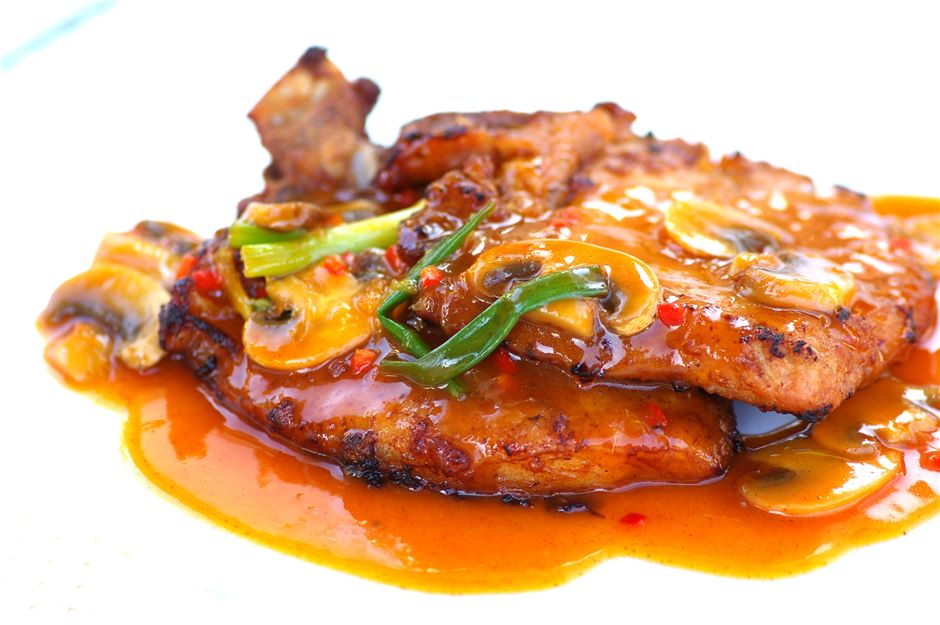Recipe Description
Jiaozi are eaten in many parts of China and East Asia and are synonymous with the Lunar New Year, probably because they are usually folded to resemble the Imperial sycee or ingot currency from the Qin to the Ming dynasties.
Nowadays jiaozi is eaten all year round and the varieties are as abundant as their names. The fried variety or wor tip, literally translated as pot stickers, is a northern style Chinese dumpling, popular as a street food, appetizer, side dish or dim sum.
My first encounter with making pot stickers was when I was studying in the US and a Taiwanese schoolmate suggested that we make jiaozi for Chinese New Year. So we invited several international students over to celebrate the festival and make the dumplings together.
When it was time to fry the dumplings, another friend suggested adding water to the dumplings as we were frying them. This method was completely alien to me because I had never seen that done before. As I was always keen to experiment and try new things, I watched and discovered this half-fried, half-steamed morsel of delight that was crispy and succulent at the same time.
Over the years, I was fortunate to be able to enjoy various versions of pot stickers and the one that sticks out to me was one with a delicate skirt around the edges. Here’s the recipe that I found and tested and adjusted until it worked. It still does not create the lacy skirt that I was trying to achieve but it’s close. It may be because I’m still cautious about the amount of vinegar to use in the batter since I didn’t want the taste to be overpowered by its tartness. Do test it out and vary the amount until you are satisfied with the results.
Although the typical vegetable used in the filling is cabbage or napa cabbage, I opted for garlic chives because of its flavour and colour. But you may substitute with any leafy vegetables or herbs that you prefer.
To prevent the ginger from getting too dark by sitting in the dipping sauce, I would only stir in the ginger just before serving.
Recipe Ingredient
- 25 gyoza wrappers
- 6 tbsp cooking oil
- Filling:
- 400g minced pork
- 100g shrimp meat, diced
- 100g garlic chives, diced
- 1 tsp ginger, grated
- 2 cloves garlic, minced
- 1 tbsp sesame oil
- 1 tbsp Shaoxing wine
- 1 tsp salt to taste
- 1 tsp sugar to taste
- 1 tsp white pepper to taste
- Skirt:
- 3 tbsp cornstarch
- 1 tbsp all-purpose flour
- 1 cup water
- 1 tsp white vinegar
- Dipping Sauce:
- 1 tbsp ginger, finely julienned
- 1 tbsp black vinegar
- 1 tsp soy sauce
- 1 tsp sugar
Instructions
- Combine the filling ingredients together in a mixing bowl and allow the meat to marinate for about 20 minutes.
- Take about one tablespoon of filling and place into the centre of the gyoza wrapper.
- Pleat the wrapper into a crescent-shaped dumpling and continue wrapping until all the filling and wrappers are finished.
- In a small bowl or measuring cup, whisk together all the skirt ingredients until combined.
- Heat two tablespoons of cooking oil in a non-stick frying pan (preferably one with a glass lid) and swirl it around until almost smoking hot. Place the eight dumplings in a circle around the pan and fry on one side for about 5 minutes until lightly browned.
- Stir the skirt slurry until well mixed and pour about a third of it into the pan as it is frying the dumplings. Immediately cover with a lid and allow the dumplings to steam for about another 5 minutes until the skirt dries out and gets crispy. Open the lid and remove dumplings from the pan and wipe off any charred pieces.
- Continue to fry and steam the remaining dumplings in two more batches. Serve immediately with dipping sauce while the skirt is still crispy.










